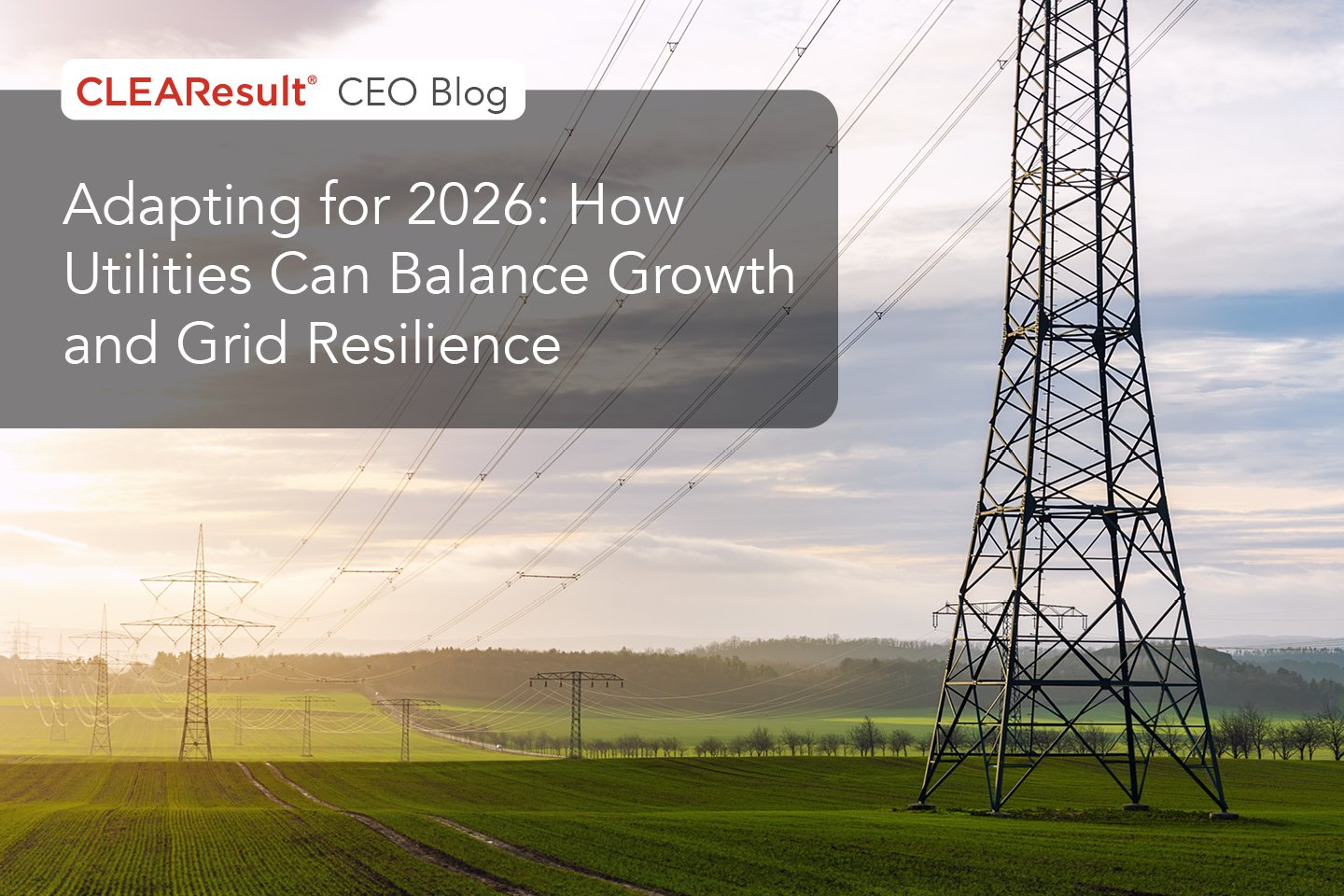Adapting for 2026: How Utilities Can Balance Growth and Grid Resilience

By Rich McBee | President & CEO, CLEAResult
Electricity demand across North America is surging in ways the industry hasn’t seen in decades. AI data centers, electrified transportation, and rapid economic growth are reshaping when and how we use power. Utilities now face a defining moment: how to keep pace with unprecedented demand while maintaining reliability and affordability.
The challenge is real, but so is the opportunity.
The grid crisis is here and growing
From Texas to Canada and New York to California, energy systems built for steady, predictable growth are now confronting steep, uneven spikes that test their resilience. In the PJM territory alone, data center expansion is expected to drive more than 32 gigawatts (GW) of new demand by 2030, while generation retirements and transmission bottlenecks reduce available capacity.
The imbalance isn’t just about load volume — it’s about load behavior. AI-driven facilities operate 24/7, consuming power with a consistency and intensity unlike anything before. Traditional grid-planning models were never designed for this.
That’s what makes recent demand flexibility agreements so important. Google’s contracts with utilities like Indiana Michigan Power and TVA signal a major shift: for the first time, an AI-heavy operator has agreed to curtail non-urgent computing during peak grid hours in exchange for incentives.
U.S. residential electricity prices have risen faster than inflation, averaging around 17.5 cents per kilowatt hour this year, though rates vary widely by region. If we don’t adapt quickly, the strain will show up as reliability challenges, escalating costs, and missed opportunities for economic growth. With the right strategy, we can build a system that’s not only smarter and faster, but also more resilient heading into 2026 and beyond.
Three ways to strengthen grid adaptability
1. Forecast dynamically
Static, year-over-year planning no longer works. Utilities need predictive analytics that integrate real-time data from distributed resources, EV charging networks, and industrial operations. The leaders we work with are using AI not just as a demand driver – but as a demand-management tool.
2. Build flexibility into infrastructure and policy
Virtual Power Plants (VPPs) and demand-response portfolios can now serve as “virtual generation.” Deploying 60 gigawatts of VPPs could save $15–35 billion over the next decade. But capturing that value requires regulatory frameworks that reward flexibility, not just capacity.
3. Collaborate across the ecosystem
No single entity can solve this alone. Utilities, regulators, and technology partners must coordinate investment and innovation. At CLEAResult, we’re already seeing the impact:
- With Los Gatos Tomato Products and PG&E, efficiency upgrades are saving 3.7 million kWh annually, easing regional load.
- In California, our partnership with 365 Forrest helped install eight Level 2 EV charging ports through HOA, developer, and utility collaboration. Even small-scale retrofits can have a high system impact when timed and targeted correctly.
- By partnering with Encentiv Energy, we’re helping commercial customers quickly identify and secure utility incentives, reducing the friction between opportunity and action.
And across North America, we're seeing traction. Our latest 2024 Sustainability Report highlights achievements like:
- Enabling clients to reduce over 8.5 million metric tons of CO₂ in one year
- Adding 82 new programs, with many targeting underserved regions
- Launching tools like CLEAResult ATLAS™ to improve program data access and agility
These are blueprints for scalable resilience heading into 2026.
2026 readiness: a leadership test
By 2026, utilities that succeed will be those that treat adaptability as a core competency. That means embedding efficiency into every decision, from capital planning to customer engagement. It means re-evaluating what “capacity” really means in an age where data moves faster than infrastructure.
Policymakers, too, play a crucial role. Embedding flexibility into long-range planning – while empowering utilities to innovate – will determine whether we meet the moment with foresight or fall behind in reaction.
The supply-demand imbalance is the defining energy challenge of our time. But it’s also a defining leadership opportunity. Together, we can turn strain into strength – by planning smarter, collaborating deeper, and adapting faster.
When we lead with adaptability, we can secure the grid, reduce costs, and accelerate clean energy transformation. Adaptability isn’t just a response to change; it’s the strategy that will define the next era of growth.